081517_YKBP_A5.pdf






Broadcaster Press 5
August 15, 2017 www.broadcasteronline.com
Graduating College,
Career And Life Ready
By Gov. Dennis Daugaard
It’s hard to believe my oldest grandchild is starting kindergarten this year. With a week-and-a-half
left before his first day, Henry is looking forward to
starting school.
Even though it’s been a while since I was in the
classroom, I’ve learned a few things as a parent, public servant and now, grandfather. I know how crucial
education is to individual achievement and how,
particularly during high school, planning and forming
good habits can help students succeed.
For high schoolers and their parents, I have three
tips to share for the upcoming school year.
First, don’t underestimate the importance of showing up. Some absences cannot be avoided, and that
is understandable. Sometimes, though, absences add
up without students and families noticing. Research
tells us that missing just 10 percent of a school year
negatively impacts student achievement. That breaks
down to missing only two or three days of school a
month. So it’s easy to see how those absences can
accumulate, yet escape families’ attention.
This tip applies beyond just high schoolers, as it
is important to build good attendance habits from
the beginning. In the earliest grades, good attendance is a strong predictor for whether students will
be proficient readers. By middle school, chronic
absence puts students at risk of not graduating. In
fact, by 9th grade, a student’s attendance record is
an even better predictor of graduation rates than are
8th grade test scores.
Second, high school juniors and seniors should
consider dual credit options. Dual credit courses allow students to simultaneously earn high school and
college credit. For those with busy schedules or who
live in rural areas, dual credit courses can be taken
online. At only $48.33 per credit hour, these courses
provide students and their families significant cost
savings. These are the cheapest university or technical school credits a student will ever take, and they
can save hundreds of dollars by taking just one
course. Last year, South Dakota students saved more
than $4.4 million by using this program – averaging
more than $1,000 per student in savings.
And last, enjoy the present but think about the
future. High school is the time to start thinking about
career paths. High schoolers should explore different
fields by taking advantage of internships, job-shadowing opportunities and hands-on learning experiences. They need to begin to weigh their interests,
goals, and abilities, and to consider what jobs are
available and what paths will lead to employment.
The goal of our education system is to successfully prepare students for college, career and life.
Whether they go on to one of our state’s public
universities, technical institutes or right into the
workforce, we want students to graduate with a
plan in place for taking their next steps. Consistent
attendance, dual credit and job exploration can help
lay the foundation for that to happen.
Standing Strong Against
Foreign Aggression
By Sen. Mike Rounds
Today, as threats to the United States continue
to grow across the globe, it is important to remind
ourselves that we remain the strongest, most powerful country in the world and can face any challenge
presented by America’s enemies. The U.S. military
is the most sophisticated and capable fighting force
the world has ever seen, and, with continued support from Congress and the president, can regain
the required level of readiness lost during years of
underfunding. As a member of the Senate Armed
Services Committee, I’m extremely proud of our ability to come together to support our troops and their
missions each year.
Recently, news broke that North Korea has allegedly developed a nuclear warhead that could be
mated to a missile and reach United States soil. Many
Americans are rightly concerned about this development. In response to North Korea’s nuclear weapons initiatives, the United Nations Security Council
unanimously voted to approve new, global sanctions
against North Korea. This came shortly after Congress passed and President Trump signed into law an
expanded set of sanctions against hostile actors, to
include North Korea.
While the United States is capable of taking
military action against those wishing to do us harm,
sanctions can be a helpful tool we can use to deter
and respond to destabilizing, dangerous behavior
without the risks associated with a military response. The United States has a long history of using
sanctions as a tool of foreign policy, and I support its
use as a peaceful attempt to apply pressure to rogue
nations. Further, if North Korea takes steps toward
becoming a more responsible actor in the international community, the U.S. and international comGet your ad in the..
munity could reward such behavior by rolling back
selected sanctions. A successful implementation of
sanctions on North Korea will require international
cooperation, especially from China. Specifically,
these sanctions would directly affect North Korea’s
senior leadership and their supporters.
However, we must keep all options on the table as
we continue our efforts to stabilize and de-escalate
dangerous situations, including that with North
Korea. As I’ve said many times before, the defense of
our nation is the primary responsibility of the federal
government. The North Korean regime has threatened the United States and our allies countless times,
and we must continue to send a strong message that
aggression will not be tolerated.
But the Korean peninsula isn’t the only area in
which we must keep a careful watch on rogue actors.
Elsewhere in the world, Iran continues to violate
international restrictions prohibiting ballistic missile
testing and illicit arms transfers. Russia has invaded
Ukraine and, in violation of international law annexed
the Crimean peninsula. It also brazenly engages in cyberattacks, as exemplified by their efforts during the
2016 U.S. presidential election. The recent sanctions
legislation that President Trump signed into law
punishes both of these nations, in addition to North
Korea, for their continued aggressive, destabilizing
behaviors.
Earlier this summer, I wrote about the importance
of rebuilding our armed forces and promoting ‘Peace
Through Strength,’ a philosophy implemented by
President Ronald Reagan to successfully end the
Cold War in the 1980s. Now more than ever, we must
be prepared to use our military strength along with
non-military measures to deter aggression and, if
deterrence fails, make certain that attacks on our
country or our allies are soundly defeated.
It’s Been
Dry…
By Rep. Kristi Noem
It’s been dry to say the very least. Every county in
the state has experienced this year’s drought to some
degree, with many facing severe or extreme conditions. Well over half of South Dakota’s wheat is in
poor or very poor condition, as is most of our barley,
oats and alfalfa. Corn and soybeans are hurting too.
Meanwhile, many pastures have been brown for some
time, leaving ranchers with a severe feed shortage
and forcing many to downsize their herds.
Every farmer and rancher understands agriculture
is a risky business. You can have good crops for a
decade, but one or two bad years can change everything. Times like this underscore the importance of
providing a safety net to those who maintain our food
supply.
Earlier this month, I joined members of the House
Agriculture Committee for a Farm Bill listening session where these safety nets were a primary focus.
During the 2014 Farm Bill debate, I fought hard as a
member of the final negotiating team to strengthen
crop insurance and make the Livestock Forage
Program permanent, because ranchers should have
some certainty about the safety nets available when
drought conditions leave wheat heads unfilled and
pastures bare. At the same time, taxpayers deserve
certainty too. By building safety-net programs like
this into the budget rather than doing crisis-by-crisis
emergency spending, we can better predict financial
needs and avoid deficit spending.
Additionally, I’ve been pleased to see Secretary
Perdue incrementally open South Dakota’s CRP acres
for haying and grazing, following a request I made
to do so. He also allowed for certain CRP contract
holders to donate their hay to livestock producers
in drought-stricken counties. This relief was needed,
but I believe this is an area where ranchers ought
to have more certainty. In late July, I introduced the
Donations in Rough Years (DRY) Act. This bill would
permanently allow the hay harvested on certain CRP
acres to be donated to ranchers struggling to meet
their feed needs.
Droughts and fires can leave thousands of acres
bare, while farmers and ranchers elsewhere are
forced to destroy good hay. There’s just no reason
feed should be wasted. The DRY Act offers a commonsense solution. More specifically, the bill would
allow for hay harvested in line with CRP management practices to be donated to ranchers suffering
from a severe drought (categorized as D2 on the
U.S. Drought Monitor) for eight weeks or an extreme
drought (categorized as D3) for any length of time. If
a presidential disaster is declared due to fire, ranchers would also be eligible to receive donated hay.
Too often, the federal government waits until a
situation gets bad before figuring out how to deal
with it. In situations where days matter – such as in
the midst of a drought-induced feed shortage – relief
can come too late. We should be more proactive.
That’s why it was important to fight to strengthen
crop insurance and make livestock disaster programs
permanent. It’s also why I believe the DRY Act is
necessary. It won’t make the rain fall, but perhaps it
can give a little peace of mind at a very unpredictable
time.
With an
ad in the
624-4429 Broadcaster
Romsdahl’s
Repair & Remodel
Classifieds
Today!
CALL: 624-4429 or FAX: 624-2696
EMAIL: classifieds@plaintalk.net
ONLINE: BroadcasterOnline.com
DROP BY: 201 W. Cherry, Vermillion
With an ad in the
Broadcaster
Carpentry, Decks,
Windows & Doors,
Refinishing, Drywall, &
Ceramic Tile
624-4429
18 Years in Business
Free Estimates
605-670-2161
THE HEART &
VASCULAR SCREENS
Screening saves lives
Get screened at Sanford Vermillion
The Heart Screen™: For ages 40-75.
The Vascular Screen: For those 40 or older.
Type 1 diabetics should be screened at age 30 or older.
AUGUST 28, 8 A.M. – 5 P.M.
AUGUST 29, 8 A.M. – NOON
SANFORD VERMILLION
20 S PLUM ST., VERMILLION, SD
COST: $25 EACH
Call (888) 996-4673
to schedule an appointment.
Learn more about our screenings at
sanfordhealth.org, keyword: screenings.
8027-00101 Rev. 8/17





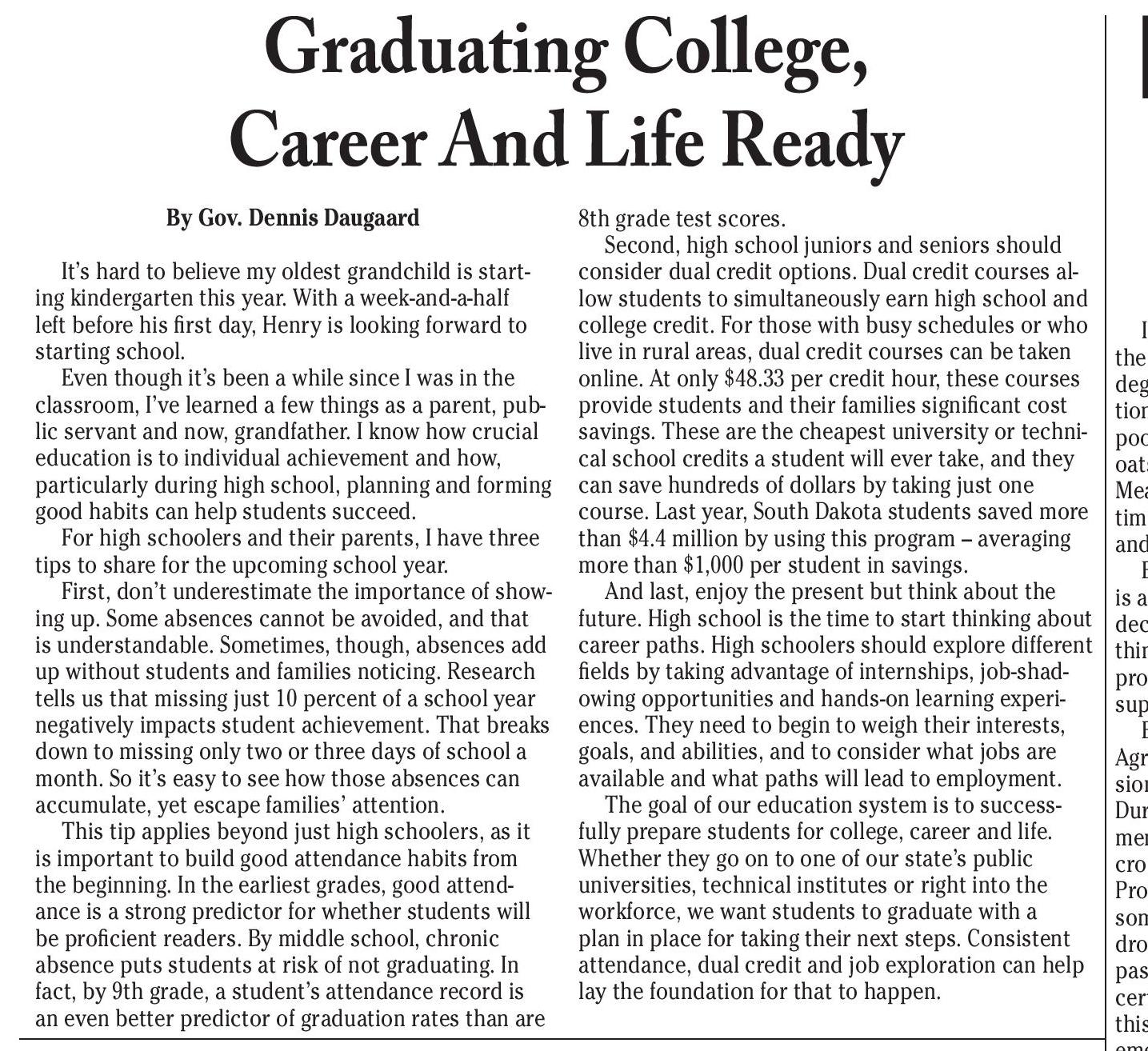


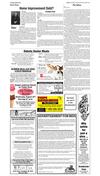
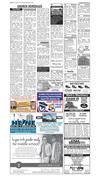

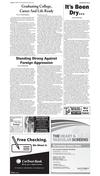


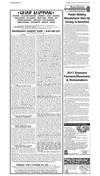


 Previous Page
Previous Page






